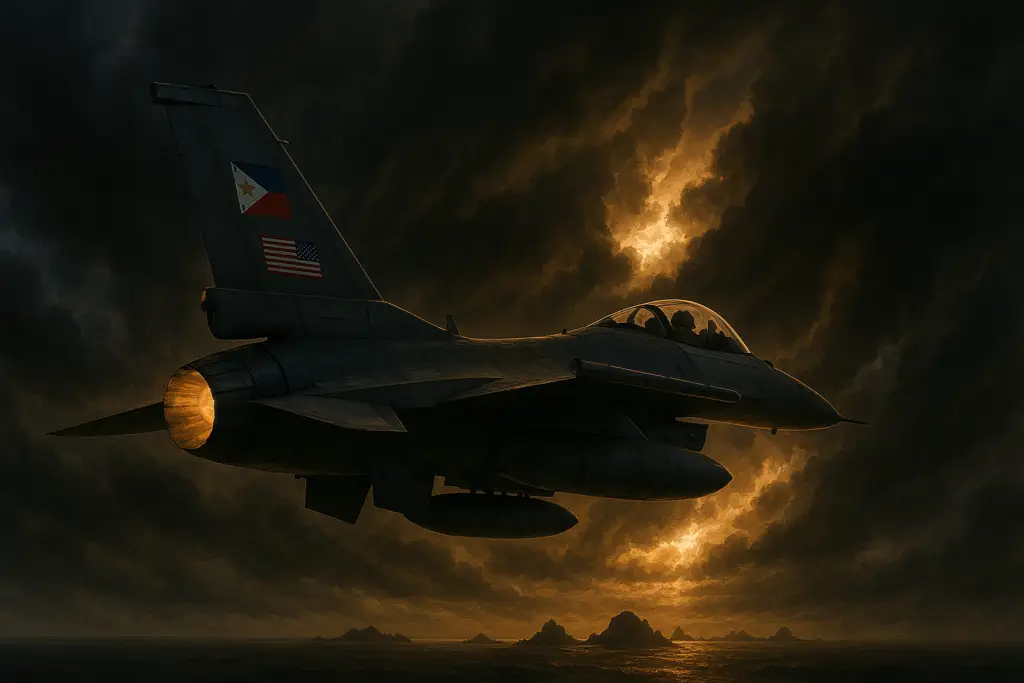The thunder of 20 American-made F-16 fighter jets will soon pierce the skies above the contested waters of the South China Sea, as Washington has just handed Manila a $5.58 billion military ace card in its increasingly tense standoff with Beijing.
In what defense analysts are calling a “game-changing power shift,” the United States approved the sale of these advanced warplanes to the Philippines on Tuesday, delivering a steel-winged message to China just days after Defense Secretary Pete Hegseth’s provocative vow to counter “China’s aggression” in the region.
“This isn’t just about aircraft—it’s about redrawing the power map of Southeast Asia,” said Dr. Eleanor Vasquez, an Indo-Pacific security specialist at the Strategic Defense Institute. “These F-16s transform the Philippines from a coastal defender into a credible regional air power virtually overnight.”
The deal—which includes 16 single-seat F-16Cs and 4 dual-seat F-16Ds—represents a quantum leap for the Philippine Air Force, which currently operates just 12 lighter South Korean FA-50 jets. The American-made fighters scream through the sky at over 1,500 miles per hour—350 mph faster than anything currently in Manila’s arsenal.
The timing couldn’t be more charged. Beijing’s shadow looms large over the region, with China making increasingly bold moves to control the South China Sea despite an international ruling denying its claims. The waterways have become a flashpoint where Philippine vessels regularly face off against Chinese coast guard ships in nerve-wracking encounters.
“We believe that regional countries can see the situation clearly,” warned Chinese Foreign Ministry spokesperson Guo Jiakun on Wednesday, his words cutting through diplomatic niceties. “Any defense and security cooperation should not target or harm the interests of any third party.”
Behind closed doors, Philippine military officials are reportedly breathing a collective sigh of relief. The country’s aging air defense system has long been overwhelmed by China’s military buildup, leaving Manila vulnerable in a region where territorial disputes can quickly spiral into dangerous confrontations.
“This proposed sale will support the foreign policy and national security of the United States by helping to improve the security of a strategic partner,” the US Defense Security Cooperation Agency stated, the bureaucratic language barely masking the deal’s seismic implications.
During his visit last week—his first to Asia as defense chief—Hegseth didn’t mince words, describing the US-Philippine relationship as an “ironclad alliance, particularly in the face of Communist China’s aggression in the region.” The fighter jet deal puts hardware behind his heated rhetoric.
The F-16s represent the bleeding edge of fourth-generation fighter technology. Manufacturer Lockheed Martin boasts of their “structural service life” exceeding 12,000 hours, packed with advanced avionics, radar systems, and weaponry that dramatically outclass anything in the Philippines’ current inventory.
For ordinary Filipinos living in coastal communities, the stakes couldn’t be higher. “We see Chinese vessels from our fishing grounds almost every day now,” said Manuel Robles, a fisherman from Palawan. “Maybe now they’ll think twice before pushing us around.”
The Trump administration has pledged to “truly prioritize a shift” to the Indo-Pacific region, recognizing that “for the 21st century to be a free century, America needs to stand alongside our allies and partners shoulder to shoulder,” according to Hegseth.
As the sun sets over Manila Bay, the shadow of these phantom fighters already seems to loom large—a $5.58 billion statement that the geopolitical chessboard in Southeast Asia just got a lot more interesting.




